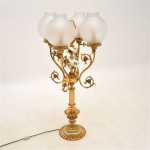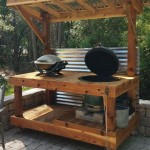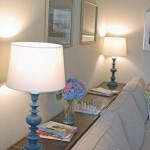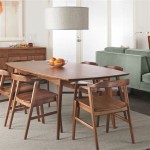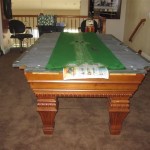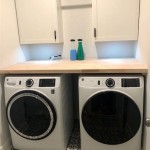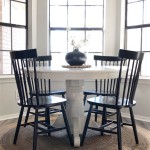Glass Top Dining Table Sets For 6: A Comprehensive Guide
Glass top dining table sets designed for six individuals represent a popular choice for modern homes. These sets combine the aesthetic appeal of glass with the functional requirements of a dining area that comfortably accommodates a family or a small group of guests. The design, materials, and overall quality of these sets can vary considerably, influencing both the price point and the long-term value of the investment.
The selection of a suitable glass top dining table set for six involves careful consideration of several factors, including the size of the dining space, the intended style and decor, the durability of the materials used, and the budget constraints of the buyer. A well-chosen set can serve as a focal point in the dining room, enhancing the overall ambiance and providing a practical surface for meals and other activities.
This article aims to provide a comprehensive overview of glass top dining table sets for six, exploring the various aspects that contribute to their design, construction, and suitability for different dining environments. The discussion will cover the types of glass used, the materials commonly employed for the table base and chairs, the various design styles available, and the maintenance requirements associated with these sets. By understanding these elements, consumers can make informed decisions when selecting a glass top dining table set that meets their specific needs and preferences.
Understanding the Composition of Glass Table Tops
The glass component of a dining table set is arguably the defining characteristic, and the type of glass used significantly influences the table's durability, safety, and aesthetic qualities. Two primary types of glass are typically used in the construction of glass top dining tables: tempered glass and standard plate glass. Tempered glass is the preferred choice due to its superior strength and safety features.
Tempered glass undergoes a heat treatment process that significantly increases its resistance to impact and thermal stress. This process involves heating the glass to a high temperature and then rapidly cooling it. The rapid cooling creates compressive stress on the surface of the glass, making it considerably stronger than standard plate glass. In the event of breakage, tempered glass shatters into small, relatively harmless fragments, reducing the risk of serious injury. This safety feature is particularly important in households with children or pets.
Standard plate glass, on the other hand, is less expensive but also less durable and less safe. It is more prone to scratching and chipping, and when it breaks, it can shatter into large, sharp pieces. While it may be suitable for decorative applications, it is generally not recommended for use in dining tables, especially those intended for regular use.
The thickness of the glass is another important consideration. Thicker glass is generally more resistant to damage and can support heavier loads. A glass top for a dining table designed for six individuals should ideally be at least 10mm thick, and preferably 12mm or thicker, depending on the size and shape of the table. This thickness will ensure that the table can withstand the weight of dishes, serving platters, and other items without risk of cracking or shattering.
Beyond the basic safety and durability considerations, the finish of the glass can also impact its appearance and maintenance requirements. Clear glass is a classic choice that allows the table base to be fully visible, creating a sense of openness and spaciousness. Frosted glass offers a more diffused and subtle look, hiding fingerprints and smudges more effectively. Tinted glass, such as gray or bronze, can add a touch of sophistication and can complement specific color schemes in the dining room.
Selecting Base Materials for Glass Top Dining Tables
The table base provides the structural support for the glass top and contributes significantly to the overall aesthetic of the dining table set. The choice of material for the base can impact the table's stability, durability, and visual appeal. Common materials used for glass top dining table bases include metal, wood, and acrylic.
Metal bases are often chosen for their strength, durability, and modern aesthetic. Stainless steel and wrought iron are two popular options. Stainless steel is resistant to rust and corrosion, making it a suitable choice for humid environments. It also offers a sleek, contemporary look that complements the clean lines of a glass top. Wrought iron bases provide a more traditional and rustic feel, and they can be intricately designed with decorative details.
Wood bases offer a warmer and more organic aesthetic. Solid wood or wood veneer can be used to create a variety of designs, from simple and minimalist to ornate and traditional. Common wood types include oak, maple, walnut, and birch. The choice of wood should be determined by the desired color and grain pattern, as well as the overall style of the dining room. Proper sealing and finishing are essential to protect the wood from moisture and stains.
Acrylic bases are a more contemporary and unconventional option. Acrylic is a durable and lightweight material that can be molded into a variety of shapes and colors. It is often used to create transparent or translucent bases, which can enhance the sense of openness and lightness in a room. Acrylic bases are also relatively easy to clean and maintain.
The design of the table base is also an important consideration. Pedestal bases, which consist of a single central support, can provide ample legroom and create a visually appealing focal point. Four-legged bases offer a more traditional and stable design. Trestle bases, which feature two or more vertical supports connected by a horizontal beam, can add a touch of rustic charm.
Regardless of the material and design chosen, the table base should be sturdy and well-constructed to ensure the stability and safety of the glass top. The base should be properly attached to the glass top using appropriate fasteners, such as screws or suction cups, to prevent slippage or movement.
Choosing Complementary Chairs for Your Dining Set
The chairs that accompany a glass top dining table set are crucial for both comfort and aesthetics. The chairs should complement the table's design and style, while also providing adequate support and comfort for diners. Considerations include the chair's material, height, seat width, and back support.
Chair materials commonly used in dining sets include wood, metal, and upholstered fabrics. Wooden chairs offer a classic and timeless look. They can be made from a variety of wood types, such as oak, maple, and walnut, and can be finished in a range of colors and stains. Metal chairs are often chosen for their durability and modern aesthetic. They can be made from stainless steel, wrought iron, or aluminum, and can be powder-coated in a variety of colors.
Upholstered chairs provide added comfort and can enhance the overall style of the dining room. The upholstery material can be fabric, leather, or faux leather. Fabric chairs offer a wide range of colors, patterns, and textures, allowing for greater customization. Leather chairs provide a luxurious and sophisticated look, but they may require more maintenance. Faux leather chairs offer a more affordable and practical alternative to real leather.
The height of the chairs should be appropriate for the height of the table. The standard height for a dining table is approximately 30 inches, and the chairs should be approximately 18 inches high, providing adequate legroom and comfortable seating. The seat width and depth should also be considered, ensuring that the chairs are comfortable for a variety of body types.
Back support is another important factor to consider. Chairs with high backs provide more support and can be more comfortable for longer meals. Chairs with low backs offer a more minimalist and modern look. Some chairs feature contoured backs that conform to the shape of the spine, providing added comfort and support.
The style of the chairs should complement the overall style of the dining table and the dining room. Modern dining sets often feature sleek and minimalist chairs with clean lines and simple designs. Traditional dining sets may feature more ornate chairs with carved details and upholstered seats. Transitional dining sets combine elements of both modern and traditional styles, offering a versatile and adaptable look.
In addition to the chair's material, height, seat width, and back support, it is also important to consider the chair's durability and stability. The chairs should be sturdy and well-constructed to withstand regular use. The legs should be level and stable, preventing wobbling or tipping. Chairs should also be easy to clean and maintain, especially if they are upholstered.
The number of chairs included in the dining set is also an important consideration. While the set is designed for six individuals, flexibility is key. Ensure the chairs are easily moved and additional seating can be added if necessary without overwhelming the space.
Ultimately, the selection of chairs for a glass top dining table set is a matter of personal preference and should be based on individual needs and style preferences. By considering the factors outlined above, consumers can choose chairs that are both comfortable and stylish, enhancing the overall dining experience.

Shayra Rectangular 6 Seater Glass Top Dining Table Sets

6 Seater Glass Top Wooden Dining Table Set

Modern 6 Seaters Design Glass Top Dining Table Set Tables Sets Made In Com

Glass Top 6 Seater Teak Wood Dining Table Set

Bourdaine Glass Top 6 Seater Dining Table Urban Ladder

Furniture Of America Manhattan I White Table Cm3710t Glass Dining Room Set Sets

6 Seater Glass Top Designer Wooden Dining Table Set

Glass Dining Table Buy Set Online Upto 70 Off

Echo Glass Top Dining Table Set With 6 Chairs The American Furniture

Colonial Styled 6 Seater Dinning Set With Glass Table Top Caspian Furnitures

